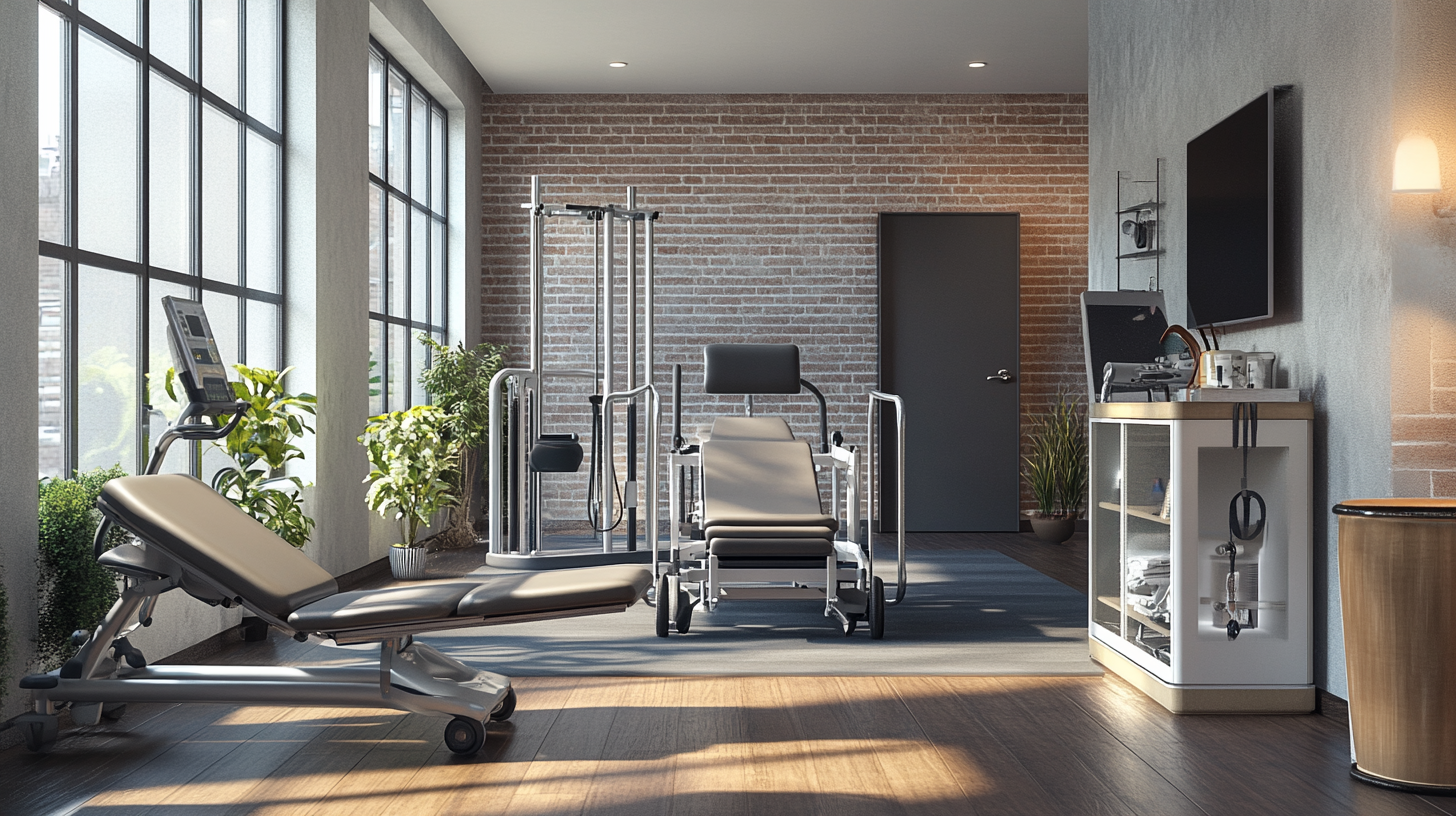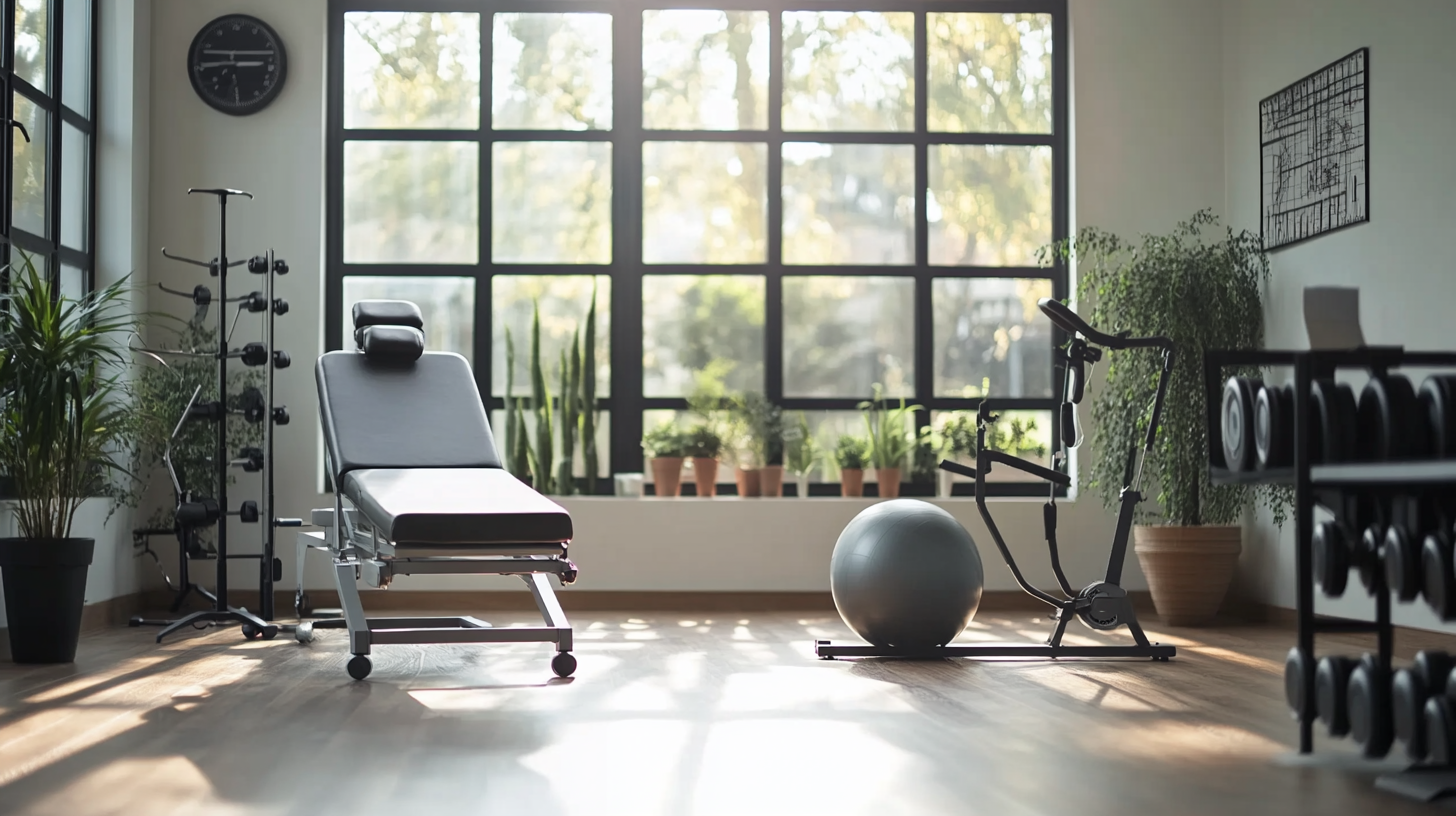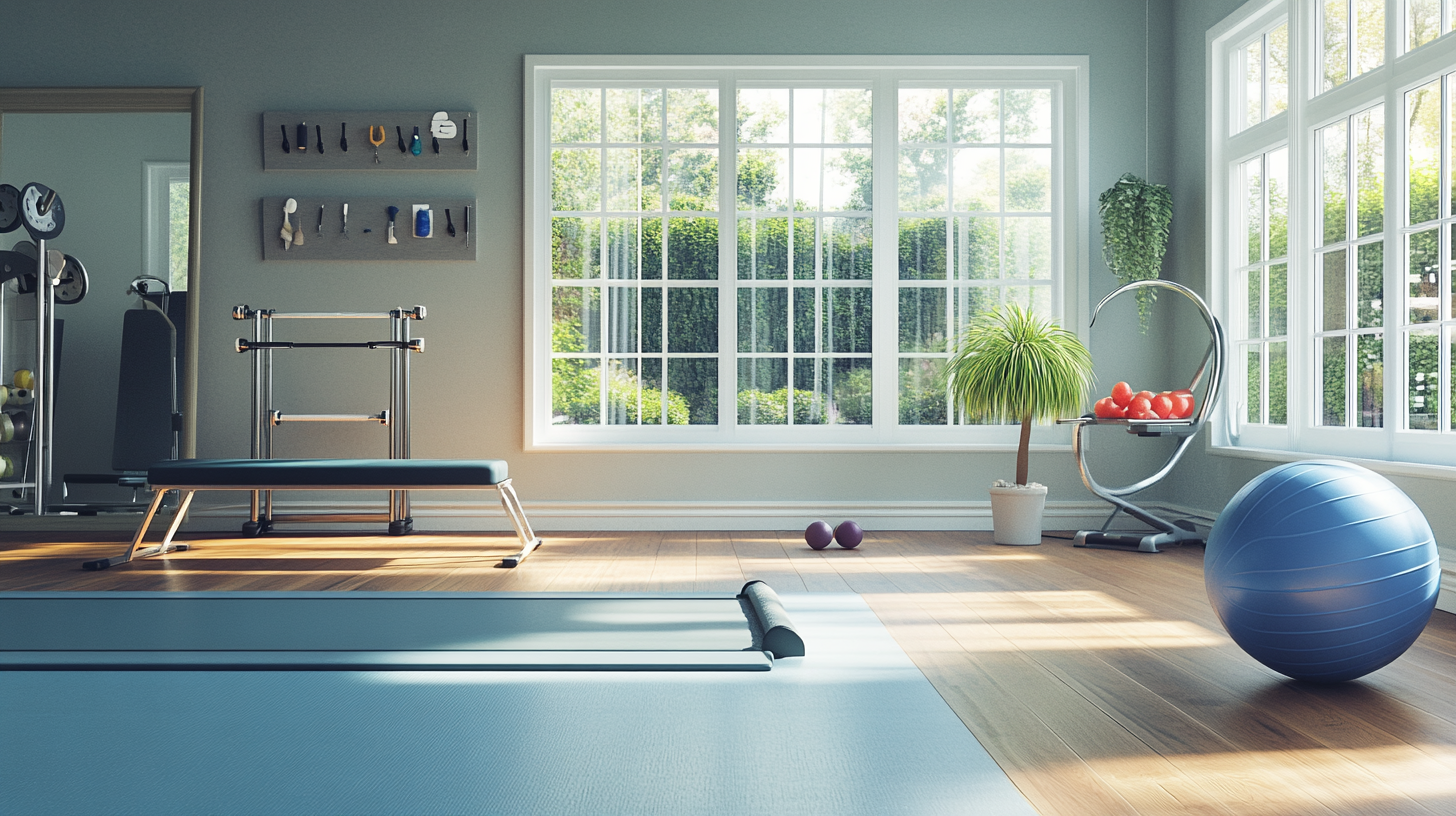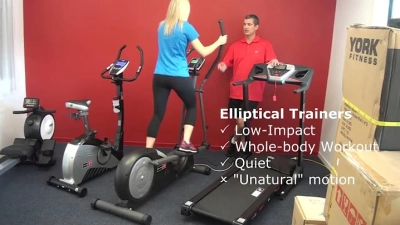Finding the Best Home Rehab Equipment: A Comprehensive Guide for Global Buyers
In recent years, the global market for rehab equipment for home use has witnessed a significant surge, driven by an increasing aging population and the growing prevalence of chronic diseases. According to a report by Grand View Research, the global rehabilitation equipment market is expected to reach USD 25.4 billion by 2025, growing at a compound annual growth rate (CAGR) of 6.4%. This trend indicates a heightened awareness of the importance of home rehabilitation programs, enabling individuals to regain mobility and independence in the comfort of their own space. As the demand for effective rehab equipment increases, it becomes essential for buyers worldwide to make informed choices that best suit their needs.
Navigating the world of rehab equipment for home can be daunting, given the wide array of products designed to cater to various rehabilitation needs. From mobility aids to exercise machines, understanding which tools are most effective in assisting recovery is crucial. Studies indicate that the right home rehab equipment not only speeds up recovery times but also enhances overall well-being. For instance, the American Physical Therapy Association emphasizes that personalized rehabilitation programs lead to improved patient outcomes. This comprehensive guide aims to equip global buyers with the knowledge they need to select the best rehab equipment for home, ensuring that their recovery journey is as effective and comfortable as possible.

Types of Home Rehab Equipment: Understanding Different Categories and Their Uses
When it comes to home rehabilitation equipment, understanding the various categories and their uses can significantly enhance your recovery journey. Home rehab equipment can be broadly classified into several types, including resistance training tools, cardiovascular machines, and flexibility devices. Each category serves a unique purpose, enabling individuals to tailor their workouts to their rehabilitation needs.
Resistance training tools, such as resistance bands and dumbbells, are essential for building strength and muscle endurance. These items are particularly beneficial for individuals recovering from injuries, as they allow for gradual progression and adaptation. Cardiovascular machines, like stationary bikes and treadmills, play a crucial role in improving cardiovascular health and increasing endurance, which is often a key component of rehabilitation programs. Lastly, flexibility devices such as foam rollers and stretching straps can help with mobility and reduce muscle tension, further supporting the recovery process.
As you explore options for home rehab equipment, it's vital to consider your personal fitness goals, available space, and preferred types of training. For instance, if you're looking for versatility, smart home gyms that integrate multiple functionalities could be ideal. Additionally, exercise apps are becoming increasingly popular, providing guidance and tracking tools to keep you motivated. By understanding the different categories and uses of rehab equipment, you can make informed choices that align with your rehabilitation objectives.

Key Features to Look for When Selecting Rehab Equipment for Home Use
When selecting rehab equipment for home use, it is essential to consider several key features that ensure optimal recovery and functionality. First and foremost, the adjustability of the equipment should be evaluated. Adjustable settings allow individuals to customize the intensity and ergonomics based on their specific needs, making rehabilitation both comfortable and effective. For instance, adjustable resistance levels in exercise bikes can cater to various fitness levels, which is crucial for progressive rehabilitation.
Another important feature to look for is portability. Since many users may wish to move their equipment within their home or transport it for outdoor use, lightweight and easily foldable designs are incredibly beneficial. Equipment such as portable parallel bars or compact treadmills can enhance versatility in workouts and ensure that users remain motivated by changing their environment.
Durability is also a critical aspect of rehab equipment. Investing in high-quality, rugged materials ensures that the equipment withstands regular use while providing safety during exercises. Users should look for equipment that includes features like non-slip surfaces and reinforced frames, which can prevent accidents and provide a stable rehabilitation experience. By focusing on these key features, buyers can make informed decisions that cater to their rehabilitation goals in the comfort of their homes.
Home Rehab Equipment Features Comparison
This chart illustrates the key features of various home rehabilitation equipment, helping global buyers make informed choices. Each bar represents the importance of features such as Portability, Durability, Versatility, and Price Effectiveness.
Evaluating Quality and Safety Standards in Home Rehabilitation Products
When it comes to home rehabilitation, ensuring the quality and safety of equipment is paramount for effective recovery. According to a report by the Global Rehabilitation Equipment Market, which is expected to reach $19.2 billion by 2026, the industry's growth is propelled by an increasing focus on patient-centered care and the rising incidence of disabilities. This underscores the importance of selecting products that meet stringent quality standards.
To evaluate the safety and effectiveness of home rehab equipment, consumers should look for certifications from recognized bodies such as the Food and Drug Administration (FDA) in the United States or the European Medical Device Regulation (MDR). These certifications indicate that the equipment has undergone rigorous testing and meets essential safety criteria. A study published in the Journal of Rehabilitation Research found that equipment adhering to these standards significantly improves rehabilitation outcomes.
Moreover, it's crucial to consider materials and design used in rehab products. According to the National Institute of Health, equipment made from biocompatible materials minimizes the risk of adverse reactions, further ensuring user safety. Additionally, user-friendly design features, such as adjustable settings and ergonomic shapes, enhance usability for individuals recovering from various conditions. As the demand for home rehabilitation products grows, buyers must remain vigilant about quality and safety standards to support their health and recovery journeys.

Budgeting for Home Rehab Equipment: Cost-effective Options and Investments
When budgeting for home rehab equipment, finding cost-effective options is key to setting up a space that meets your fitness and rehabilitation needs without breaking the bank. The market offers a variety of affordable equipment that caters to different workout styles and goals. From dumbbells to resistance bands, even the simplest tools can have a profound impact on your training routine. For those aiming to create a comprehensive gym environment, versatility and adaptability become crucial factors to consider.
Today’s home gym offerings include multifunctional equipment that fits into smaller spaces while providing multiple workout options. Items such as adjustable weights or compact rowing machines bring a lot of value without a hefty price tag. It's also notable that the smart home gym equipment segment is on the rise, providing advanced tracking features and guidance, often at very competitive prices. With the projected growth of this market, investing in smart technology may enhance your exercise experience, making your home rehab process not only efficient but also enjoyable.
As you explore your options, keep in mind that effective budgeting for home rehab equipment isn’t just about the initial purchase price. Considering longevity, ease of use, and space efficiency can help you make informed choices that serve you well over time. Whether you're a beginner or looking to upgrade your existing setup, a thoughtful approach to investment can lead to a successful and sustainable home rehabilitation journey.
Home Rehab Equipment Budget Breakdown
Top Brands and Manufacturers for Reliable Home Rehab Equipment Solutions
When it comes to home rehabilitation equipment, choosing reliable brands and manufacturers is crucial for effective recovery. Global consumers are increasingly aware of the importance of quality and durability in therapeutic tools as the market for home rehab products continues to expand. According to a report by Market Research Future, the home healthcare market, which includes rehabilitation equipment, is projected to reach USD 444.3 billion by 2027, growing at a CAGR of 8.5%. This growth highlights the significance of investing in reputable brands that prioritize innovation and user satisfaction.
Some of the top brands in the industry are recognized for their commitment to quality and functionality. For instance, brands like Invacare and Drive Medical have established a strong presence in the market. Invacare offers a wide range of rehab equipment, including mobility aids and exercise devices, known for their ergonomic design and compliance with international safety standards. Drive Medical, on the other hand, is celebrated for its comprehensive selection of affordable and effective rehabilitation tools, catering to various needs from mobility to strength-building.
Furthermore, established manufacturers like Body-Solid and Lifefitness are gaining traction among consumers looking for home rehab solutions that not only facilitate recovery but also improve overall fitness. Body-Solid specializes in strength training equipment, which plays a vital role in rehabilitation by helping users regain muscle strength. Meanwhile, Lifefitness is known for its advanced technology in rehab treadmills and exercise bikes, focusing on enhancing user experience through interactive features.
In an era where personal health management is increasingly shifting to the home environment, selecting high-quality rehab equipment from trusted brands is essential. With the right tools, individuals can effectively manage their rehabilitation journeys, ensuring they receive the right support for a successful recovery.
Finding the Best Home Rehab Equipment: A Comprehensive Guide for Global Buyers
| Brand | Product Type | Key Features | Price Range | User Rating |
|---|---|---|---|---|
| Invacare | Mobility Aids | Lightweight, durable, adjustable height | $100 - $300 | 4.5/5 |
| TheraBand | Resistance Bands | Multiple resistance levels, portable | $10 - $50 | 4.8/5 |
| NordicTrack | Rehabilitation Equipment | Incline training, interactive coaching | $700 - $2000 | 4.6/5 |
| Body Solid | Weight Machines | Compact design, multi-functionality | $300 - $800 | 4.7/5 |
| Schwinn | Stationary Bikes | Adjustable seat, Bluetooth connectivity | $400 - $1000 | 4.4/5 |



